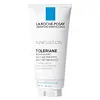What's inside
What's inside
 Key Ingredients
Key Ingredients

 Benefits
Benefits

 Concerns
Concerns

 Ingredients Side-by-side
Ingredients Side-by-side

Water
Skin ConditioningGlycerin
HumectantSodium Cocoyl Isethionate
CleansingPotassium Cocoyl Glycinate
Cetearyl Alcohol
EmollientSodium C14-16 Olefin Sulfonate
CleansingAcrylates Copolymer
Sodium Cocoyl Glutamate
CleansingHydrogenated Coconut Acid
EmollientVigna Angularis Seed Extract
Skin ProtectingGlycine Max Seed Extract
Skin ConditioningOryza Sativa Powder
Avena Sativa Kernel Flour
AbrasiveCoix Lacryma-Jobi Ma-Yuen Seed Powder
HumectantPhaseolus Radiatus Seed Powder
Squalane
EmollientLimnanthes Alba Seed Oil
Skin ConditioningCeramide NP
Skin ConditioningPhytosphingosine
Skin ConditioningHydrogenated Lecithin
EmulsifyingSodium Isethionate
CleansingPotassium Benzoate
PreservativeButylene Glycol
HumectantPolyquaternium-67
Hexadecene
Solvent1,2-Hexanediol
Skin ConditioningTrisodium Ethylenediamine Disuccinate
Tetradecene
EmollientSorbitol
HumectantCitric Acid
BufferingWater, Glycerin, Sodium Cocoyl Isethionate, Potassium Cocoyl Glycinate, Cetearyl Alcohol, Sodium C14-16 Olefin Sulfonate, Acrylates Copolymer, Sodium Cocoyl Glutamate, Hydrogenated Coconut Acid, Vigna Angularis Seed Extract, Glycine Max Seed Extract, Oryza Sativa Powder, Avena Sativa Kernel Flour, Coix Lacryma-Jobi Ma-Yuen Seed Powder, Phaseolus Radiatus Seed Powder, Squalane, Limnanthes Alba Seed Oil, Ceramide NP, Phytosphingosine, Hydrogenated Lecithin, Sodium Isethionate, Potassium Benzoate, Butylene Glycol, Polyquaternium-67, Hexadecene, 1,2-Hexanediol, Trisodium Ethylenediamine Disuccinate, Tetradecene, Sorbitol, Citric Acid
 Reviews
Reviews

Ingredients Explained
These ingredients are found in both products.
Ingredients higher up in an ingredient list are typically present in a larger amount.
Ceramide NP is a type of ceramide.
Ceramides are intercellular lipids naturally found in our skin that bonds dead skin cells together to create a barrier. They are known for their ability to hold water and thus are a great ingredient for dry skin.
Ceramides are an important building block for our skin barrier. A stronger barrier helps the skin look more firm and hydrated. By bolstering the skin ceramides act as a barrier against irritating ingredients. This can help with inflammation as well.
If you would like to eat ceramides, sweet potatoes contain a small amount.
Read more about other common types of ceramides here:
Ceramide AP
Ceramide EOP
Glycerin is already naturally found in your skin. It helps moisturize and protect your skin.
A study from 2016 found glycerin to be more effective as a humectant than AHAs and hyaluronic acid.
As a humectant, it helps the skin stay hydrated by pulling moisture to your skin. The low molecular weight of glycerin allows it to pull moisture into the deeper layers of your skin.
Hydrated skin improves your skin barrier; Your skin barrier helps protect against irritants and bacteria.
Glycerin has also been found to have antimicrobial and antiviral properties. Due to these properties, glycerin is often used in wound and burn treatments.
In cosmetics, glycerin is usually derived from plants such as soybean or palm. However, it can also be sourced from animals, such as tallow or animal fat.
This ingredient is organic, colorless, odorless, and non-toxic.
Glycerin is the name for this ingredient in American English. British English uses Glycerol/Glycerine.
Learn more about GlycerinWater. It's the most common cosmetic ingredient of all. You'll usually see it at the top of ingredient lists, meaning that it makes up the largest part of the product.
So why is it so popular? Water most often acts as a solvent - this means that it helps dissolve other ingredients into the formulation.
You'll also recognize water as that liquid we all need to stay alive. If you see this, drink a glass of water. Stay hydrated!
Learn more about Water